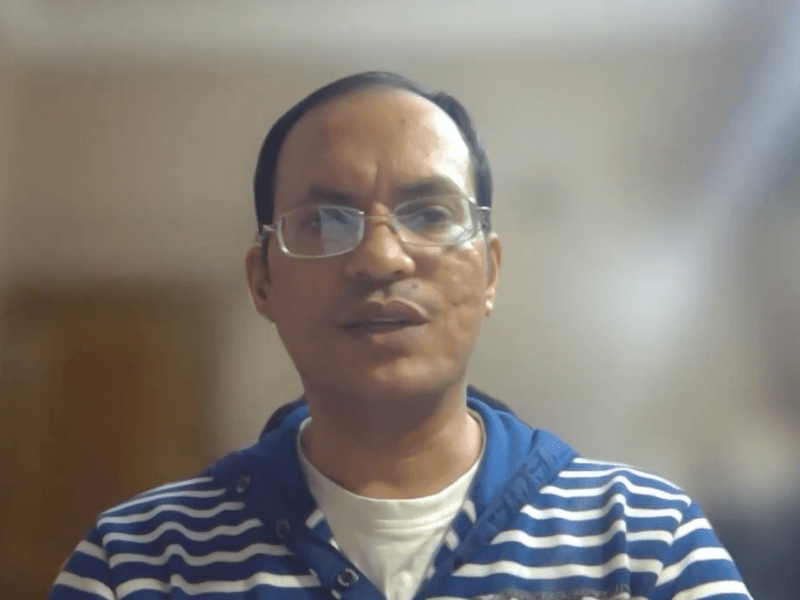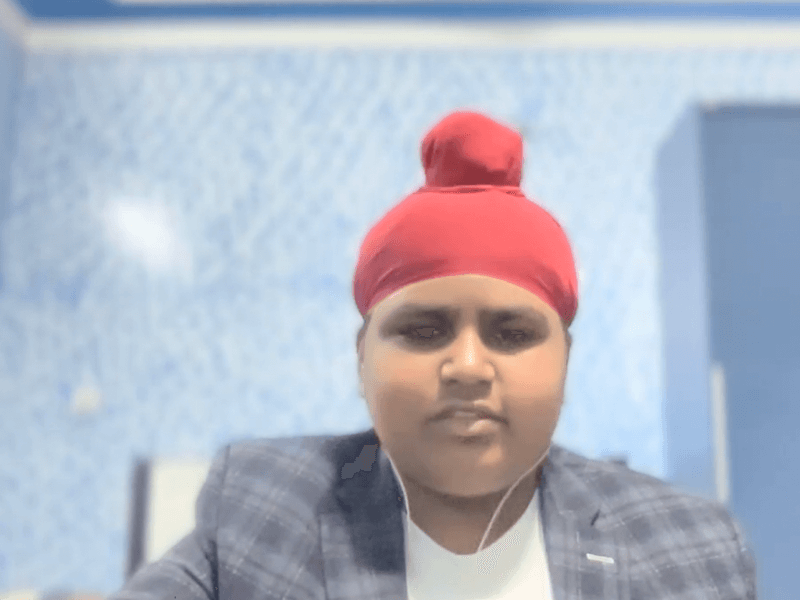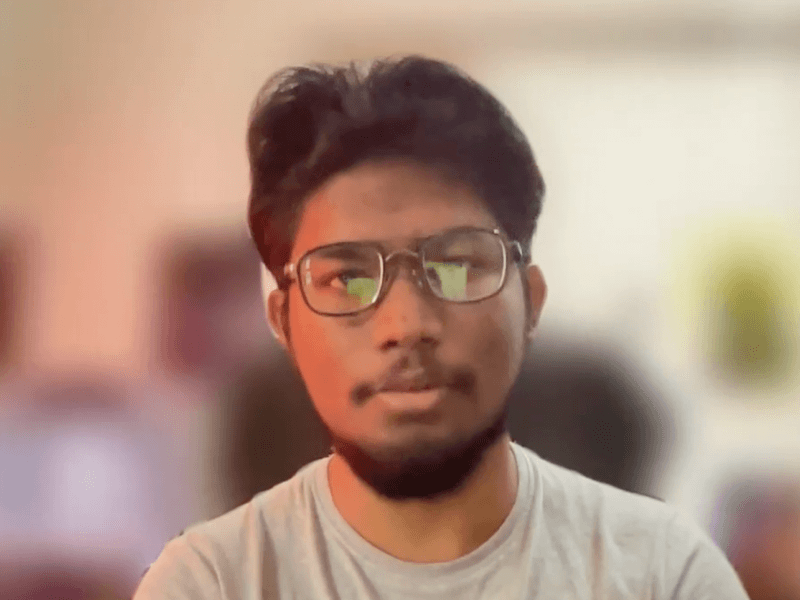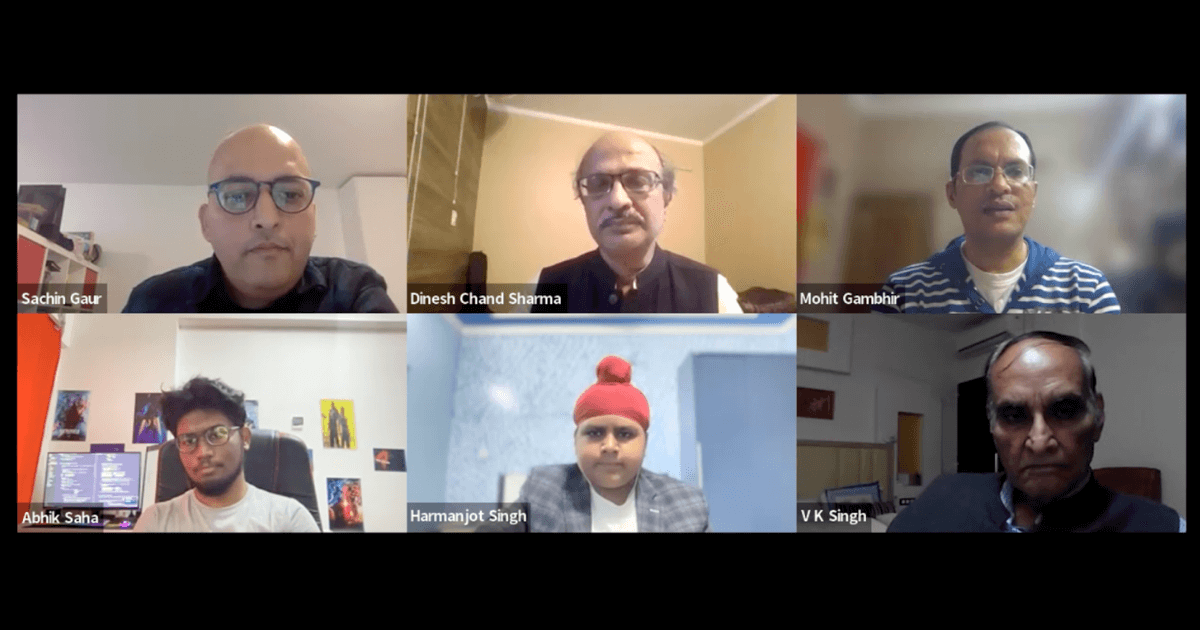Young Innovators! How can one define young? Is it something related to age, or something related to field experience or just a combination of both. For now, let us fly ahead to cover the Eleventh IC InnovatorCLUB virtual meeting, which was conducted on February 12, 2022 under the theme “Young Innovators”. This meeting, unlike the usual panelists, saw a younger generation taking the lead in sharing their relatively extraordinary experiences, and declaring outright the strength, perseverance, commitment and most importantly freshness in their imagination and innovation.
The meeting commenced with Dr. V.K.Singh, Managing Director of InnovatioCuris and InnovatioCuris Foundation of Healthcare & Excellence, introducing the IC InnovatorCLUB and the motive behind having “Young Innovators” as the theme for the edition of the meeting. He pronounced the pace of the waves at which the young generation is striding and their level of all round understanding of aspects which took years to research. He was particularly exuberant for this edition of the meeting which consisted of presentations and panel discussion charting guests from different generations with various facets of innovation.
Dr. Singh introduced the presenters and panelists of the meeting starting with Dr. Mohit Gambhir, Innovation Director @ Ministry of Education’s Innovation Cell, Govt. of India, Mr. Harmanjot Singh, who at a tender age of 14-year-old has created three award-winning Mobile Apps. One of his app for women’s safety called Raksha has won him Prime Minister Bal Puraskar for the year 2021, Mr. Abhik Saha another young innovator who at the age of 15 years was awarded the Gandhian Young Innovation Award (GYTI) 2018 by President Ram Nath Kovind at the Festival of Innovation and Entrepreneurship (FINE) and, Dinesh C Sharma, is an award-winning journalist, author and media trainer with over 35 years’ experience of reporting on science and technology, health and environment for national and international media outlets and has recently composed a book on the top 100 innovations from India.
Dr. Singh further mentioned about the InnoHEALTH magazine which is circulated to a huge global healthcare community consisting of 95000 subscribers. The interview of Harmanjot Singh, who is a 14 year old Bal Puraskar awardee and a panelist in this edition of IC InnovatorCLUB meeting, will be published in the upcoming edition of the magazine scheduled to be released in March 2022. He also urged that more interviews, experiences and journeys of the younger generation be published to promote visibility and garner the young minds of the nation. He highlighted the focus of the Prime Minister of India on innovations, unicorns and the supporting tools for these like conducting hackathons, eg; IDEAthon, SAMADHAN, Smart India Hackathon with Dr. Mohit Gambhir through the Ministry of Education who was the organizer.He optimistically mentioned that, though India was at 46th and 40th position on the innovation index in 2000 and 2021, still India is a home for 81 unicorns with a total valuation of 279 billion USD. Out of these, 43 unicorns are valued at 89 billion happening only in the last year. USA stood at the top in the number of unicorns whereas India stood in the 4th place, behind China and UK. He stated that the pandemic has forced the country into frugal and real innovation. Taking the COVID-19 vaccine as an example, he applauded the way the vaccine shots were exported contrary to our importing of the same previously.
With further elucidation he mentioned about the challenges faced by the young innovators that leads to 90% of the start-ups to fail within five years of inception and face the consequence of closure. It is not just about getting a billion unique data, but thoughts have to be on the challenges that arise by this.

Dr. Mohit Gambhir spoke ardently about the importance and the need for innovating. He emphasized that the innovation coming from the younger generation these days has upscaled it to the next level for the future. He also spoke about incubators supporting the younger generation, alongwith the hackathons to ignite the flame of innovations. He shared some numbers and thoughts on the initiatives of the Ministry of Education in conducting smart India hackathons, and also the evolution of the competition from 40,000 participants in the first year to 3.5 lakh participants in the fourth year, and expecting a million participants for the upcoming hackathons. He mentioned that the fifth edition is introducing a junior student track starting for grades 6-12, who would be part of the Open Innovation Model. Dr. Gambhir also talked about the tough, however fruitful journey of the first Indian pandemic lockdown time, where he, the Ministry of Education and InnovatioCuris, under the guidance of Dr. V K Singh moved pole to pillar to transpire the IDEAthon (a COVID-19 themed hackathon).
It was an initiative where 10000 participants came together with innovative ideas to confront and cessation of the virus. The ideas were bestowed with accolades and many teams which impressed the jury were incubated by the Ministry of Education post the hackathon.
Dr. Gambhir then spoke about the TOYCATHON (an innovative toy making themed hackathon) and explained the procedure for its participation. The number of school student participants involved, greatly indicating the younger generation’s strength in the innovation space. He mentioned about the licensing and hand-holding that is still culminating between the participant school students and the toy making companies. These initiatives will have a higher impact in broadening the horizon of the school students as such actions would help the students during the time school students and when they have reached the college their ideas which are already funded thereby will strengthen the innovation ecosystem right from school.
Dr. Gambhir then spoke about the administrative work being done in the past 2-3 years, setting up innovation councils in higher education institutions across the country to bridge the gap in the design thinking, critical thinking and cognitive skills. He stated that this model would be used to launch school innovation councils and the ministry is ready to announce 10000 school innovation councils. He spoke about the teacher training in more than 25000 schools in India on design thinking, innovation, idea, the partnerships, technology, commerce, HR, sales, financing, boot camps, arranging business plan, like kind of people and activity. These teachers, if not completely trained, are at least aware of the basic concepts so that the student may not be discouraged in posing queries in the same. Dr. Gambhir spoke about mapping innovation and its role in the flourishing of enterprise ownership which brings to the way of channelising the brain tuning and resources to bring in more indigenous products made in the country.
Dr. Gambhir concluded his talk by speaking about the current actions, numbers in the IP space compared with the super powers like India and China. He mentioned about the challenges faced in IP due to poor documentation and the actions being taken from the rudimentary level to over turn these challenges.
The club meeting progressed with a panel discussion moderated by Sachin Gaur. The panel participants were Harmanjot Singh, Abhik Saha and Dinesh C Sharma.

Harmanjot Singh started his presentation where he introduced his accolades and work he is pursuing in his apps in healthcare and cyber bullying and women’s safety app and its success, shining his work before the Government of India. He mentioned that his work consists of three main ingredients: creativity, knowledge, and perseverance, quoting Thomas Edison’s 1% inspiration and 99% perseverance. When asked about his change in life after developing these apps, he elucidated about his work life balance and its importance to motivate both segments.
After this, Abhik Saha, the second panelist started with his introduction and the way he progressed with his dream through the monotony of childhood and how he broke his shackles in setting up his own company, Origgon, a search engine. He shared his pull back from the investors terming it as a crazy idea going against a search engine giant. He then shared his long story short about his development of his idea from challenging times to his company closure due to unavailability of investors and funds. He still called it development due to the experience and excitement he received recharging him to scale to better opportunities. He mentioned that he is currently working with telecom companies, startups, etc; where they power search engine recommendations and other AI related technology backend, understanding big data. Abhik concludes that he would have ideally started his company at 15 contrary to 27 and expressed that he knew more about the jargon of the business world.

When asked about the future of online gaming in India, Abhik responded that it’s not just about gaming it’s about a completely different world that you can opt into, from your daily busy life, or whatever it does not matter in the game you can choose what character they want to be as well as the role they want to play. Also meet other people and do something together making that part of gaming so interesting, or makes the full potential of the internet in a completely different environment or scenario, also bringing those angles from the gaming to other environments like education and technology and learning.

Next, the award winning journalist, Dinesh C.Sharma took over and talked about his journey of journalism in 1984 about scientific institutions paving the way for science journalism. He mentioned his book on the Arctic where he was at the ground zero of climate change, spending time as an icebreaker. He mentioned that he broadly wrote on environment and medicine. When asked about his opinion on communication, he talked about the way communication has evolved and the change in the internet speed, the evolution of the technology infrastructure. He states that his reason to write the book. “Indian innovation: not jugaad” is first, many innovations have touched the lives of people and needed documentation, and secondly whenever there’s a discussion about Indian innovation, the word “Jugaad” comes into picture most of the time creating a wrong impression and hence wanted to shrug off the thoughts on Indian innovation.
He states that frugal innovation is not jugaad, but a quick transient act for correction and he wanted that impression to change through this book. He gives an example of the egg market in India and how uniform pricing helped egg availability all over India. He spoke about the future trends in India stating that when innovated, it finds use cases all along and not just for the length of the time it was made. He mentioned that his favorite innovation from his book is the ticketing system and the very thought of computerizing and making it, accessible to people you could book any ticket anywhere, anytime and those are that kind of revolutionary then that changed the number of people who travel by Indian railways in a year is humongous and the other innovation being the digitisation of land records. His healthcare specific favorite innovation was the set of ideas which led to making medicines and vaccines affordable to India. Dinesh mentioned that the younger generation needs mentoring from the experienced lot and that every innovation is based on a context and processed may be cultural specific, technology can only be a support and the problem solving needs innovations.
Dr. Gambhir concurred with Dinesh about the problem solving innovations and also carefully highlights the peer pressure scenarios that may arise due to this.
Dr. V.K.Singh concluded the meeting by sharing his experience on generational awareness and the perspective of life changing drastically as time passes and technology strides over power the way of living. His advice to the younger generation is to analyze failure rather than success.
Compiled by: “Clarion Smith Kodamanchili”

